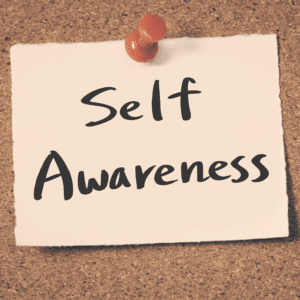Introduction
The SSAT is a standardized test that helps schools to place students in the right classes. It’s also become an important part of college admissions. That’s why it’s so important to do your best on the test and get a good score! Here are some tips for scoring your highest possible SSAT score.
Know the format.
The SSAT is a 3-hour test with three sections: reading comprehension, math and verbal reasoning. You’ll have 55 minutes to complete each section, so you’ll want to pace yourself accordingly.
The reading section is comprised of short passages followed by questions about them. Some questions will ask you to find the main idea or identify specific details; others ask whether an argument makes sense based on evidence provided in the passage (or vice versa). You’ll get 10 minutes per passage, which means that there are five total passages on this section!
In math mode, there are no tricks–just straightforward problems such as “What’s 7 minus 2?” or “If I had $3 left over after buying four books for $12 each…how much did each book cost?” The key here is mastering basic arithmetic so that you can solve these types of questions quickly and accurately without having to think too hard about it!
In verbal reasoning mode, we’ve got another question type called Cloze Sentences where we’ll see gaps within sentences–and then fill those gaps in with appropriate words from our vocabulary bank before moving forward through multiple choice answers (or simply reading through them all until we find one that works).
Get some sleep.
Before you schedule your test date, make sure you’re well-rested. You need to be alert and energetic for the test, so don’t wait until the last minute to think about how much sleep you’ll get before taking it.
The amount of sleep needed varies from person to person based on age:
- Younger students usually need more than older ones do (7 hours vs. 6 hours).
- Teenagers tend to require more rest than younger children (9 hours vs 5-6).
- Students who are entering high school should aim for 8 hours per night at least four nights out of seven; older teens may need even more time in bed each night!
Eat right.
- Eat a healthy breakfast. You don’t want to be hungry during the test, so make sure you eat something before you head out. A good option is oatmeal with fruit, which provides carbs and fiber to keep you going.
- Drink lots of water! Your brain needs plenty of oxygen to work efficiently, and staying hydrated helps ensure that your blood remains full enough with oxygen so that your brain has all it needs while taking the test.
- Avoid sugar and caffeine: Sugar spikes can cause jitters or energy crashes that make it difficult for students who consume them regularly (or even those who don’t) to focus on their exams; similarly, too much caffeine can lead to anxiety about falling asleep during an important exam–and this anxiety can actually make falling asleep more likely!
Practice, practice, practice.
Practice tests are the best way to
prepare for the SSAT. In fact, they’re the only way to know what you need to work on and where your strengths and weaknesses lie. Practice tests are available online and can be taken at any time–even if it’s not exam day yet! The online practice tests are helpful because they allow you to break down the test into manageable sections, so even if there are questions that give you trouble, there will still be enough time left over for those other topics that come easily for you.
The best way to use these practice materials is by taking them under timed conditions (similarly as though it were an actual test). This will help familiarize yourself with how quickly or slowly each section takes; this is especially important because some sections have more questions than others do! You should also try taking at least two full-length mock exams before making any final decisions about which schools might suit your needs best — this way there won’t be any surprises come testing day!
Use a study guide.
The SSAT is a challenging test, and it can be difficult to know where to start. But don’t worry! There are many ways you can prepare for the exam. One of the most effective is using a study guide.
Study guides are books that contain practice questions and answers for each section of the SSAT (introduction, reading comprehension, math problems, vocabulary). They also typically include helpful explanations for each question type so that you can learn from your mistakes as well as succeed on future tests by knowing what kinds of questions are coming up next time around.
Pay attention to test instructions.
When you take the SSAT, make sure that you understand the instructions before starting. Read them carefully and make sure that you know what is expected of you. Follow the directions exactly, even if it seems like a silly or obvious thing to do. If something doesn’t make sense, ask for help!
Have fun with it!
The SSAT is not a test of your intelligence, it’s a test of how well you can perform under pressure. So don’t get too nervous! If you’re taking an exam in school, then chances are the stakes aren’t quite as high as they are on standardized tests like the SAT or ACT. Just remember that these exams aren’t designed to be taken seriously–they’re meant for kids and parents alike to have fun with them!
You should also try not to overanalyze every question before answering it; just go with your gut instinct and move on. The more time spent thinking about each question will only increase stress levels and decrease performance on future questions (which will lead back into more stress). It may seem counterintuitive, but trust me: just do what feels right!
Conclusion
We hope that you’ve found some useful tips and strategies to help you get the most out of your practice test. Remember, there’s no right or wrong way to approach this exam–it’s all about finding what works best for you!









